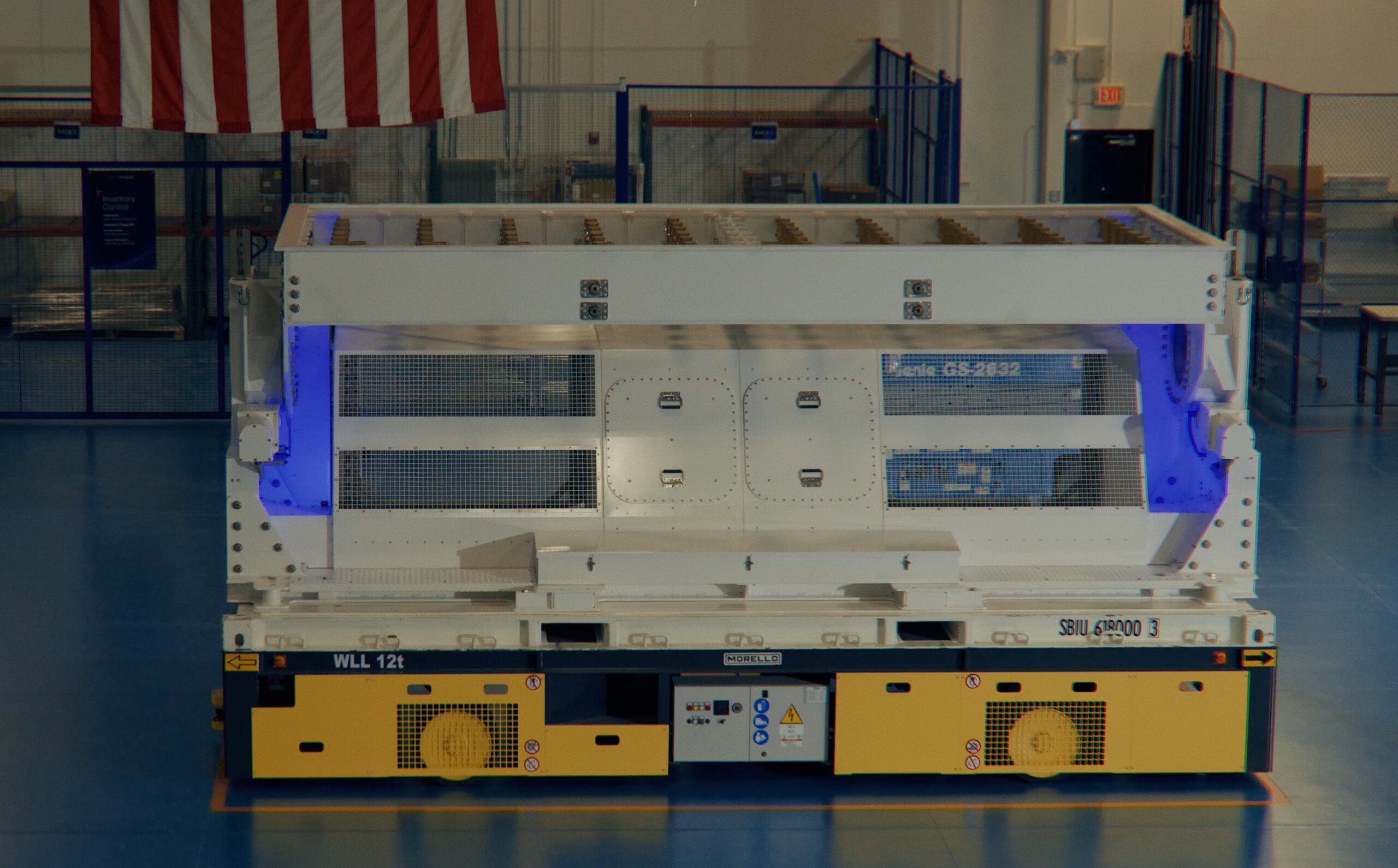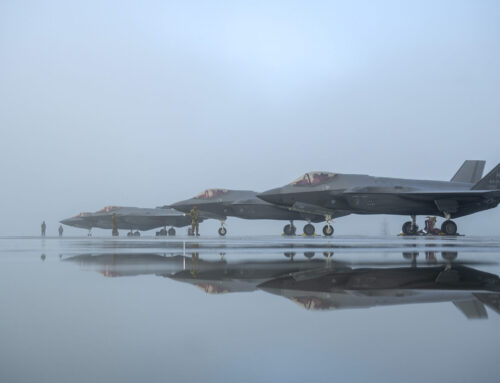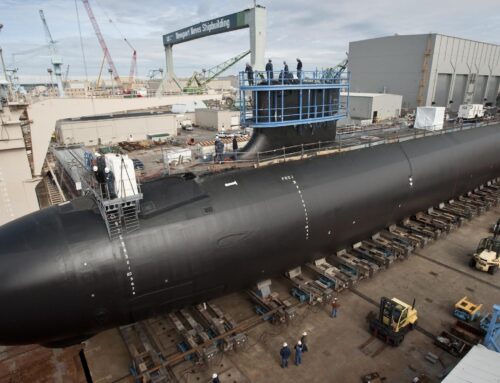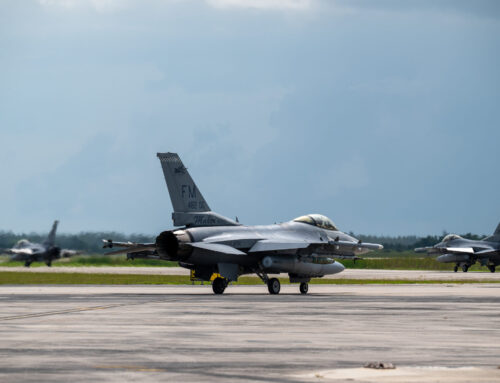BlueHalo’s deployable ground system, based on a multi-band phased array antenna design, will replace the Satellite Control Network’s old parabolic dish antennas. (BlueHalo)
AMOS 2024 — Military commanders and Pentagon officials are pushing for extra funds to speed up the Space Rapid Capabilities Office’s Satellite Communications Augmentation Resource (SCAR) program to field modernized antennas for the antiquated Satellite Control Network (SCN), according to Space RCO Director Kelly Hammett.
“There is a significant push for more [funding] currently in discussion with the Congress, with CAPE [Cost Assessment and Program Evaluation office], with others,” he told Breaking Defense on Tuesday on the margins of the annual Advanced Maui Optical and Space Surveillance Technologies (AMOS) conference.
Hammet said that though the SCAR program has been in the works for a couple of years, it is being seen as more urgent for keeping satellite communications flowing as top brass have begun to worry more about possible great power conflict with China and/or Russia.
“In the last six months, the importance of SCAR to the future comms architecture for space has been significantly elevated. Why? It’s recognized that in a time of conflict, the legacy SCN does not have the capacity to be able to see to the necessary assets to fight the fight when when things go from a peacetime footing to a dynamic space operations environment,” he said. “When we shift to that footing, the necessary cadence of commanding and controlling satellites to move, hide, run, and fight goes up significantly.”
“It’s no longer we’re pushing SCAR on everybody else,” he said. “It’s like, ‘give me, give me, give me, give me, give me, and give to me as fast as you can.”
The current system under SCN includes 19 old-style parabolic antennas located at seven locations around the world. and performs control functions consisting of tracking (determining where a satellite is located), telemetry (collecting information about its health and status) and command (transmitting signals to control subsystems and maneuvering satellites if necessary).
SCAR would replace those old antennas, which can only connect with one satellite at a time, with modern phased-array antennas that are capable of simultaneously contacting between 18 to 20 satellites. With the Space Force planning to field more and more satellites, that extra capacity is necessary to keep them all flying, according to officers at the 22nd Space Operations Squadron responsible for that mission.
“Parabolic dishes, you know, have a lot of moving parts. You gotta steer them around. You got motors, you got gears, you got all that, and those are typically the things that wear out and break in corrosive environments,” Hammet explained. “And so with the phased array, you don’t have that. You have electronically steerable beams.”
Space RCO — created by Congress in the 2018 National Defense Authorization Act as a semi-independent agency to rapidly field capabilities to US Space Command — launched SCAR in May 2022 with an Other Transaction Authority award worth up to $1.4 billion to BlueHalo. The contract covers delivery of up to 12 of the company’s BADGER ground system units, which are based on a multi-band, software-defined, phased-array antenna design, by the early 2030s.
Already, first deliveries have been “accelerated,” Hammet said, with two extra units funded in the fiscal 2025 budget request to be deployed in the Indo-Pacific region rather than a single prototype, bringing the total of funded systems up to three. And, he suggested, there might be an appetite for even more units than originally planned.
To that potential end, BlueHalo has invested to ensure it can produce more units at a faster pace, Mary Clum, portfolio president and corporate executive vice president, told Breaking Defense.
“We set up the manufacturing line ready to build at a capacity that’s greater than the need. So, 20 per year is the capacity. So we’re ready to say we can bring that with the dual lines in the factory and the option to scale to a third, if there is more demand signal,” she said.
Clum said that BlueHalo at this point could further accelerate deliveries, for example to provide up to six units by around 2028. “That’s the acceleration we’re advocating for,” she said.











